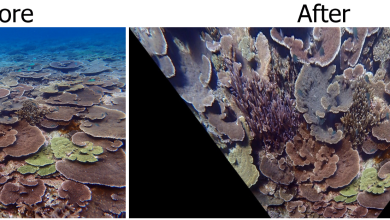Bad Science Movie Night at Florida Tech
Here at Florida Tech, the Society of Physics Students and Students for the Exploration and Development of Space have a tradition we like to call our “Bad Science Movie Nights.”
We get together, usually with pizza, put on a movie, and point out any bad science we see in said movie. Suffice it to say, we usually end up talking more than watching the movie, especially if the science is particularly horrifying. Our most recent victim — Gravity.
To be fair, the movie did have both bad and good science, and personally, I really do like this movie. But there are some moments that are kind of hard to ignore from a scientific perspective! The first thing that had us scoffing was how the main character (Sandra Bullock) is introduced as “Dr. Ryan Stone” and then she mentions how she used to work in a hospital. While that statement alone is perfectly fine, it had us a bit confused — do they seriously have a medical doctor working on the Hubble Space Telescope? I’m hoping they mean she was an engineer or physicist or something along those lines working with the MRI machine or something, because otherwise she is completely unqualified to be fixing Hubble. Surgery on a person and surgery on a telescope are not even sort of the same thing!
That problem is hopefully just bad wording. The next is a real problem, however, one specifically pointed out by fellow student, Chris Bahr, astrophysics major. The premise of the entire movie is that a Russian satellite is reduced to debris by another Russian satellite, and then the debris is orbiting the Earth and tears apart pretty much everything else in orbit. Well, if that debris is tearing apart all the spacecraft, how could two astronauts possibly survive? Even a miniscule piece of debris would put a hole in their spacesuits, and bye-bye astronaut. Then there’s the problem of traveling from the Explorer shuttle, which is up in orbit with the Hubble Space Telescope, to the ISS, at a much lower orbit, and then to the Chinese station, also in a different height of orbit. This isn’t like a highway where you can just change lanes; somehow Stone and Kowalski (George Clooney’s character) would have to lose kinetic energy to change orbits, and a lot of it. It just isn’t going to happen with a jetpack.

The worst moment was in the middle when Stone and Kowalski are trying to hang onto the ISS. They bounce off various parts, then Stone manages to get her leg caught in some of the parachute strings, but Kowalski misses and keeps floating away until the tether connecting the two stops him. There they are, hanging precariously with Stone’s foot barely staying wrapped in the parachute strings. Except … they aren’t moving with respect to the ISS anymore. They’re hanging there like the ISS is dragging both of them along, but the moment they became suspended in space with nothing but Stone’s foot keeping them there, their speed became the same speed as the station’s. Kowalski unclipping himself from the tether would not cause him to float away like he did! And it certainly wouldn’t cause Stone to float back toward the ISS. For some reason, in the movie, an “unknown force” is pulling him away from the ISS while Stone drifts toward it. In reality, unclipping would only make him float there alongside the ISS.
It would still be very difficult for him to get to the ISS with no way to move himself, of course. He would still probably need to unclip from the tether to prevent Stone from slipping and losing contact with the parachute strings, her only lifeline to the station. If she managed to use those strings to pull herself to the ISS, Kowalski would still be stuck out there, drifting next to the station with no way of propelling himself. Either way, the movie did not depict real science there. Our joke was the total forces acting on George Clooney’s character in this scene were Ftotal= (mass)(acceleration) + FClooney , the force of Clooney, provided to us by fellow student Victor Sallee, physics major.
There were plenty of other things we were able to pick at (especially the oxygen shortage problem), of course, but those were the major ones. We did give the movie some credit; the scene where Stone uses the landing thrusters to get herself to the Chinese station was quite accurate, even with the fire extinguisher. There’s no reason that couldn’t work, although it would be very difficult. A quote from Neil deGrasse Tyson sums up the movie rather well: “The film Gravity should be renamed Angular Momentum.” This refers to all the problems the astronauts run into with conservation of momentum — if they try to start or stop an object, its momentum has to come from or go somewhere.
Bad Science Movie Night is always a great way to bring Florida Tech students together in an easy, fun, informal way. Feel free to stop by at our next one. The more the merrier!







